Book Reviews
Book Review: “The Wood Between the Worlds: A Poetic Theology of the Cross” by Brian Zahnd
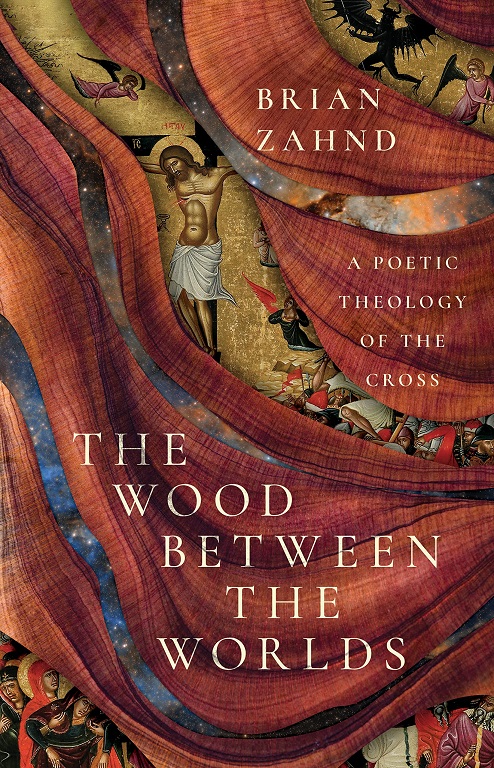
The Wood Between the Worlds by Brian Zahnd encourages believers to think upon the cross in imaginative and soul building ways.
I admit I approach reviewing this book with some trepidation, largely because there’s not a very simple way to systematically sum it up. It almost functions devotionally. Each chapter has a specific topic and focuses on what that topic can mean for our Christian life and walk. Each is also quite focused on the cross as central to that discussion. For example, Zahnd discusses one of the earliest references to the cross and Christianity together as a piece of graffiti that mocks Jesus on the cross and believers in Him; meanwhile, elsewhere, someone scrawled their faithfulness endured. It’s a powerful reminder that Christianity has stood for so long, and that the centrality of the cross was recognized even by mocking outsiders.
Zahnd doesn’t just stick to the abstract with the reflections on the cross, either. He asks questions about modern day ethics, including topics like capital punishment (chapter 14). These modern questions seem less like intrusions than extensions of his earlier chapters building the foundation for an ethics and theology of the cross.
One minor concern is that Zahnd writes that the crucifixion “is the central event in the gospel story” (28). I would disagree insofar as I think it’s more accurate to say the resurrection is the central event. Now, I realize that many use crucifixion/cross to refer to the whole events, including the resurrection of Christ, but I would prefer that to be explicated. It is, as I said, a very minor point.
The Wood Between the Worlds is a fantastic read that encourages Christians to think of Christ and the cross as central aspects of their everyday living in the Kingdom of God.
All Links to Amazon are Affiliates links
Links
Be sure to check out the page for this site on Facebook and Twitter for discussion of posts, links to other pages of interest, random talk about theology/philosophy/apologetics/movies and more!
Book Reviews– There are plenty more book reviews to read! Read like crazy! (Scroll down for more, and click at bottom for even more!)
SDG.
——
The preceding post is the property of J.W. Wartick (apart from quotations, which are the property of their respective owners, and works of art as credited; images are often freely available to the public and J.W. Wartick makes no claims of owning rights to the images unless he makes that explicit) and should not be reproduced in part or in whole without the expressed consent of the author. All content on this site is the property of J.W. Wartick and is made available for individual and personal usage. If you cite from these documents, whether for personal or professional purposes, please give appropriate citation with both the name of the author (J.W. Wartick) and a link to the original URL. If you’d like to repost a post, you may do so, provided you show less than half of the original post on your own site and link to the original post for the rest. You must also appropriately cite the post as noted above. This blog is protected by Creative Commons licensing. By viewing any part of this site, you are agreeing to this usage policy.
Book Review: “A Non-Anxious Life: Experiencing the Peace of God’s Presence” by Alan Fadling
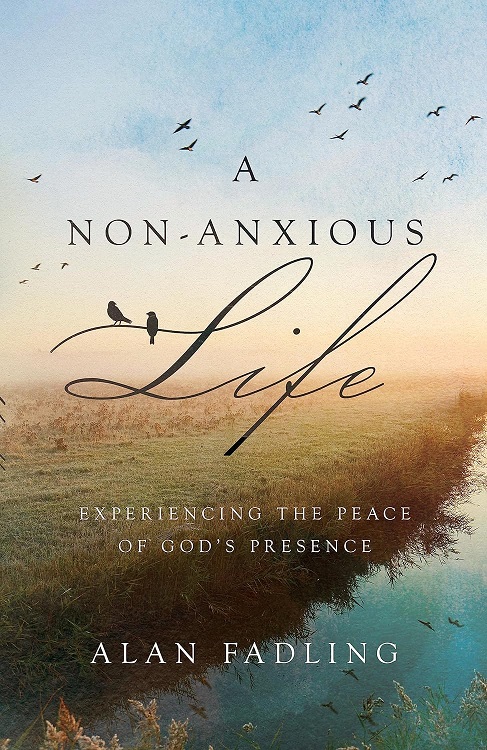
A Non-Anxious Life: Experiencing the Peace of God’s Presence by Alan Fadling seeks to provide readers with ways to manage anxiety through a Christian lens. There are some good points to be had throughout the book, but I also had significant difficulties with it.
Perhaps the biggest strength of the work is that it emphasizes how we can find comfort in God.
Perhaps my greatest reservation about the book is that it doesn’t have clear messaging. I didn’t see any clarity on the fact that anxiety is often a brain problem–a neurological issue–and this leads to some messaging that seems to make anxiety blameworthy on the individual. For example, early on in a chapter entitled “Anxiety isn’t for the birds,” Fadling writes, “Worry doesn’t help. It doesn’t improve anything. My worry is rooted in an unfortunate experiential blindness to the reality of God’s presence and God’s care in my present situation” (23). This is almost the exact opposite of what I’ve read with successful treatment or care for anxiety. Instead of noting how worry and anxiety are often rooted in patterns of brain activity which we’ve been taught, in trauma, and/or internalized from very young ages (at times), Fadling says that anxiety is “rooted in,” basically, not trusting God enough. This is sets readers up for a cycle of self-blame throughout the book. If, for example, some of the later practices for anxiety management don’t succeed, maybe that’s just the reader suffering “blindness to the reality of God’s presence.” We’re not trying hard enough, and if we just believed enough, we’d be okay. I think it is deeply problematic to set the stage in this fashion for the rest of the book.
Some of the practices Fadling includes do seem helpful, while others are too vague to be practically applied. A small section about “Transferring Our Cares to God” suggests that readers should seek humility or to be humble in times in which they are “try[ing] to take responsibility for what is God’s to care for” (37). Fadling says that one can instead “humbly trust God’s powerful care” in these moments, thus following a “way of humility” that leads us to recall that “God is not overwhelmed by the bad things to happen to us” and leave God to care for things we cannot manage (ibid). While I think this is a potentially useful practice, I was left wondering how to integrate it into any routine, especially given the stage-setting mentioned above. It seems to, again, punt the issue to just being something like trust God harder when you’re anxious, but how does that work?
The chapter on “Practicing Presence” is especially helpful as it focuses on spiritual practices such as focusing on the sense of presence with God–a nearly meditative concept. Fadling also notes how for Christians, peace can be envisioned as a person–Christ–and some ways this could be beneficial on reflection. As someone who has had therapy for anxiety, I found this to be perhaps the most helpful chapter.
One worrying thing throughout the book in addition to the problems noted above is how little emphasis (read: none) there is on things like therapy or research based perspectives on anxiety. This is evident time and again. Fadling notes at one point that “I probably won’t ever reach a point when anxious feelings do not arise in me” (76) but then the only resolution that’s offered to this is “trust Jesus harder” or “be more patient.” Fadling’s degree is an Master of Divinity–a degree many pastors achieve–but it’s not one that provides much training or certification in therapy. It makes me nervous how little any reference points are made to practical insights from trained professionals in that field, especially when paired with some of the problematic messaging I mentioned above.
A Non-Anxious Life has some practical use and tools, but I’m not sure I could endorse it given some of the issues I outlined above. It’s an intriguing attempt to integrate some useful tools for anxiety management from a Christian perspective, but I would recommend potential readers also seek research based therapy and answers.
All Links to Amazon are Affiliates links
Links
Be sure to check out the page for this site on Facebook and Twitter for discussion of posts, links to other pages of interest, random talk about theology/philosophy/apologetics/movies and more!
Book Reviews– There are plenty more book reviews to read! Read like crazy! (Scroll down for more, and click at bottom for even more!)
SDG.
——
The preceding post is the property of J.W. Wartick (apart from quotations, which are the property of their respective owners, and works of art as credited; images are often freely available to the public and J.W. Wartick makes no claims of owning rights to the images unless he makes that explicit) and should not be reproduced in part or in whole without the expressed consent of the author. All content on this site is the property of J.W. Wartick and is made available for individual and personal usage. If you cite from these documents, whether for personal or professional purposes, please give appropriate citation with both the name of the author (J.W. Wartick) and a link to the original URL. If you’d like to repost a post, you may do so, provided you show less than half of the original post on your own site and link to the original post for the rest. You must also appropriately cite the post as noted above. This blog is protected by Creative Commons licensing. By viewing any part of this site, you are agreeing to this usage policy.
Book Review: “The Practice of Remembering” by Casey Tygrett
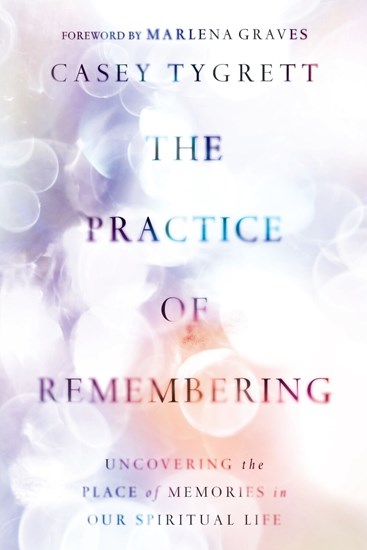
The Practice of Remembering by Casey Tygrett explores the concept of memory and how memories can form us spiritually.
It seems obvious that memory forms us as who we are today, but how does it do so, and do we have any control over it? Do we have any ways to interact with our memories–whether good or bad–to bring additional growth? Tygrett addresses these topics in an easy-to-comprehend manner, often utilizing analogies or highlighting actual brain science research (such as information about neuroplasticity). Each chapter has either a “Practice” or a “Pause” to close it out, encouraging active interaction with the content of the book.
The book is, I think, most useful to use either alone or in a group as a kind of short study/daily devotion. We don’t really spend a lot of time thinking about our memories, despite often experiencing our memories. That is, we usually passively allow memories to float to the surface or actively cycle through them without thinking about that process itself. How is it that we selected these memories at this time? What might it mean for us as people to have memories? What does it mean to experience them?
Okay, now I realize that a lot of this review has just been me asking questions. Tygrett doesn’t just ask questions, but presents a number of ways to answer these questions and reflect on them from a Christian spiritual perspective.
The Practice of Remembering invites readers into a personal, spiritual reflection on their own life experience. I found it opened up new avenues of thought. I think it certainly warrants a reread, as well. Recommended.
All Links to Amazon are Affiliates links
Links
Be sure to check out the page for this site on Facebook and Twitter for discussion of posts, links to other pages of interest, random talk about theology/philosophy/apologetics/movies and more!
Book Reviews– There are plenty more book reviews to read! Read like crazy! (Scroll down for more, and click at bottom for even more!)
SDG.
——
The preceding post is the property of J.W. Wartick (apart from quotations, which are the property of their respective owners, and works of art as credited; images are often freely available to the public and J.W. Wartick makes no claims of owning rights to the images unless he makes that explicit) and should not be reproduced in part or in whole without the expressed consent of the author. All content on this site is the property of J.W. Wartick and is made available for individual and personal usage. If you cite from these documents, whether for personal or professional purposes, please give appropriate citation with both the name of the author (J.W. Wartick) and a link to the original URL. If you’d like to repost a post, you may do so, provided you show less than half of the original post on your own site and link to the original post for the rest. You must also appropriately cite the post as noted above. This blog is protected by Creative Commons licensing. By viewing any part of this site, you are agreeing to this usage policy.
Book Review: “What Hath Darwin to do with Scripture?” by Dru Johnson- A breath of fresh air in the science-Christianity discussion
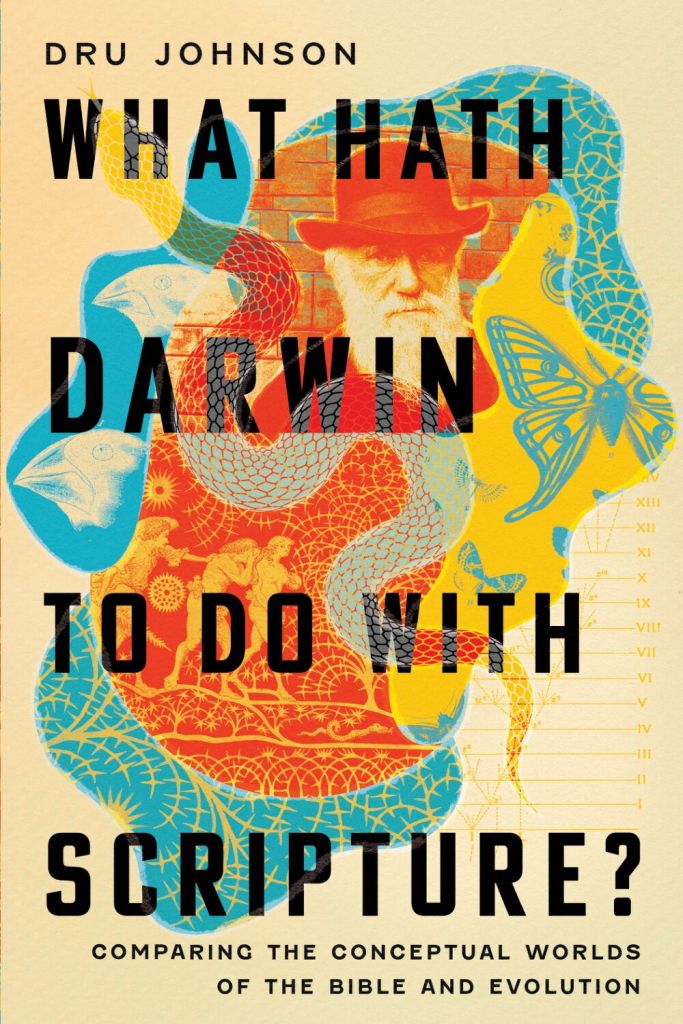
What Hath Darwin to do with Scripture? is a rarity in an overflowing market of books on Christianity and science. It brings something that feels fresh and new to the table. Having read it, I find myself sitting back and reflecting on the book, and wanting to discuss and share it with others. The first chapter puts the book’s thesis in perspective: “This is not the Creation-Evolution Debate You’re Looking For” (3). Indeed, it goes far beyond other works I’ve seen focused on interpretation of Scripture and evolution.
Dru Johnson’s work here presents a look not at debates about individualized texts and whether they can be reconciled with evolution. Instead, Johnson focuses on the conceptual worlds of evolution and the Bible to see if there is any overlap or conflict. Thus, instead of offering a text-by-text approach and asking whether this text over here precludes evolution or this one here hints at natural selection, he looks at overarching themes and stories in Scripture and how those might resonate (or not) with evolution. More specifically, Johnson argues the question shouldn’t be on pitting origin stories right next to each other in a verse-by-verse or thesis-by-thesis throwdown; instead, looking at how origin stories conceive of the world presents a more “apples to apples” approach (18-20).
There are three main themes Johnson focuses on in order to make comparisons between conceptual worlds. These themes are “scarcity,” “fit,” and “generation.”
“Scarcity” is clearly part of the Darwinian thesis and later evolutionary theory (25ff), and is often linked to violence. Johnson explores how the Bible also approaches language about scarcity and how it is also approached through violence at times (54ff). One aspect of his exploration is to point out that we have a skewed view of agrarian society and this entails a misunderstanding of the earliest parts of Genesis with its focus upon a life free of scarcity and threats emerging from the same (51ff, 56-57). The theme of scarcity doesn’t stay in Genesis, but can be found throughout the OT narratives and extends into the NT visions of a New Kingdom (83-84). The God-creation relation and covenants involved therein found in the Bible present, for Johnson, some of the places that it may be most at odds with evolutionary thinking (90). While this is the case, Johnson argues that biblical concepts related to scarcity have some resonance with evolutionary conceptualization of the world.
One of the most fascinating sections in the book is less about evolution than it is about the development of languages. In a lengthy section on the “fit” of people and creatures to their habitats, Johnson delves into the way that experts in linguistics have shown that the very geography of peoples’ regions shapes their language–complicated, high pitched noises being shouted through a rainforest, for example, doesn’t work as well as simple “e” or “a” sound. Differences between sounds used in languages can be identified and linked to geographic features (115ff). What has any of this got to do with the Bible? Johnson then turns around and examines concepts behind the story of Babel and the story of Pentecost, showing how each also shows the way geography and regional dialects could emerge (118-120).
“Generation” is the final aspect Johnson interrelates between Scripture and evolution. Sex and procreation are obvious hallmarks of both conceptual worlds, guiding the drive for selection and survival in one and becoming deeply important to the continuity of God’s promises in the other. Lengthy discussions of the seeming strangeness of monogamy from an evolutionary and even biblical perspective, discussion of norms related to sex, the natural bent towards violent sexual encounters, and more are discussed and related between the two conceptual worlds Johnson is exploring. Highlighting any number of fascinating points would be possible here. For example, discussing the prohibitions in Leviticus, Johnson points out that the focus seems to be upon aspects of generation, not on the inherent evil of whatever acts are being ruled out (162-165). Whether this could foster some additional discussion of morality and ethics is beyond Johnson’s point here, but certainly could be worth exploring.
Johnson is even in his messaging throughout the book, rarely claiming to have some grandiose answer to questions about science and Christianity. Instead, his modest conclusion is that he “retain[s] a healthy and hopeful agnostic curiosity about the integration of these two conceptual worlds–evolutionary and Hebraic–whether they can be reconciled and how so” (201). He goes on to express hope that the discussion here will lead to colleagues correcting, agreeing, discussing, opening dialogue, etc. on these topics. I wholeheartedly agree.
What Hath Darwin to do with Scripture? breathes new life into the interplay between Christianity and science. It’s a book that demands careful reading and reflection and, I hope, will spur discussion of the dialogue into new, unexplored directions. Highly recommended.
All Links to Amazon are Affiliates links
Links
Be sure to check out the page for this site on Facebook and Twitter for discussion of posts, links to other pages of interest, random talk about theology/philosophy/apologetics/movies and more!
Book Reviews– There are plenty more book reviews to read! Read like crazy! (Scroll down for more, and click at bottom for even more!)
SDG.
——
The preceding post is the property of J.W. Wartick (apart from quotations, which are the property of their respective owners, and works of art as credited; images are often freely available to the public and J.W. Wartick makes no claims of owning rights to the images unless he makes that explicit) and should not be reproduced in part or in whole without the expressed consent of the author. All content on this site is the property of J.W. Wartick and is made available for individual and personal usage. If you cite from these documents, whether for personal or professional purposes, please give appropriate citation with both the name of the author (J.W. Wartick) and a link to the original URL. If you’d like to repost a post, you may do so, provided you show less than half of the original post on your own site and link to the original post for the rest. You must also appropriately cite the post as noted above. This blog is protected by Creative Commons licensing. By viewing any part of this site, you are agreeing to this usage policy.
Book Review: “Kierkegaard and the Changelessness of God” by Craig A. Hefner
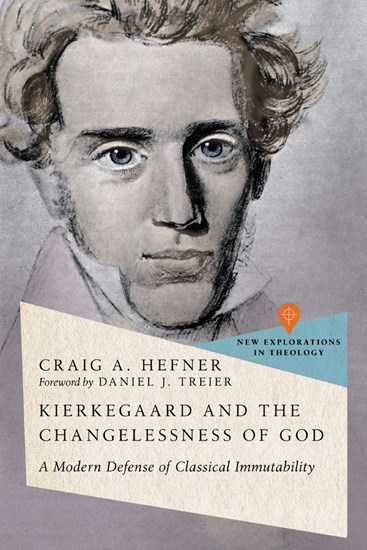
Kierkegaard and the Changelessness of God by Craig A. Hefner presents an unusual dynamic: Kierkegaard being used in defense of a core tenet of classical theology: divine immutability.
Hefner begins with a brief introduction to Kierkegaard and correction of misconceptions, including the notion that Kierkegaard was somehow out of tune with classical Christian theology. What Kierkegaard was reacting against was not Christian doctrine but rather than sleepy, comfortable way in which people were living in light of it. Kierkegaard united, rather than divided, traditional Christianity and existentialism.
Next, Hefner moves into four chapters that cover Kierkegaard and the doctrine of divine immutability or changelessness. What makes this defense of immutability unique is in part its focus on Kierkegaard’s existentialism as a defense of that changelessness. The two topics appear to be divergent, but Hefner argues the are in fact unified in Kierkegaard’s milieu. Kierkegaard’s existentialism provides a way to contrast God and humanity. The changing, “all flesh is grass” nature of humanity is contrasted with the immutable God.
Rather than simply relying on this contrast, however, Hefner with Kierkegaard argues that the Self can be reintegrated across change due to its relationship only with an immutable God. God, in other words, is the ground for the Self in a very real way. A whole chapter focuses on James 1:17 and Kierkegaard’s interpretation thereof. James 1:17 is often used as the core text for divine immutability, and Hefner draws on various interpreters to bring its insights to life.
Finally, Hefner argues that Kierkegaard’s conception of immutability doesn’t rely upon metaphysics but rather upon the concept of the self. I admit some of this section was a bit beyond me, because it seems to me that ultimately anything relies upon some kind of metaphysics. However, grounding the concept of immutability on the divine self was an interesting endeavor.
Kierkegaard and the Changelessness of God is an unexpected read. I found it refreshing despite being extremely dense. Recommended for readers looking for deep discussion of existential theology and its application to classical theism.
All Links to Amazon are Affiliates links
Links
Be sure to check out the page for this site on Facebook and Twitter for discussion of posts, links to other pages of interest, random talk about theology/philosophy/apologetics/movies and more!
Book Reviews– There are plenty more book reviews to read! Read like crazy! (Scroll down for more, and click at bottom for even more!)
SDG.
——
The preceding post is the property of J.W. Wartick (apart from quotations, which are the property of their respective owners, and works of art as credited; images are often freely available to the public and J.W. Wartick makes no claims of owning rights to the images unless he makes that explicit) and should not be reproduced in part or in whole without the expressed consent of the author. All content on this site is the property of J.W. Wartick and is made available for individual and personal usage. If you cite from these documents, whether for personal or professional purposes, please give appropriate citation with both the name of the author (J.W. Wartick) and a link to the original URL. If you’d like to repost a post, you may do so, provided you show less than half of the original post on your own site and link to the original post for the rest. You must also appropriately cite the post as noted above. This blog is protected by Creative Commons licensing. By viewing any part of this site, you are agreeing to this usage policy.
Book Review: “Reformation Commentary on Scripture: Old Testament IX- Proverbs, Ecclesiastes, Song of Songs”
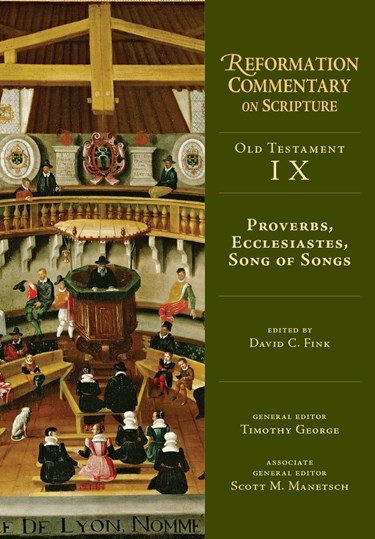
The Reformation Commentary on Scripture series from InterVarsity Press is an impressive collection of commentaries that feature a wide range of voices from the Reformation period giving insight into biblical texts. The latest volume I got was Old Testament IX: Proverbs, Ecclesiastes, Song of Songs. I was particularly excited for this volume both because I quite enjoy the books of the Bible it is discussing and because commentary on these books often varies wildly depending upon one’s background beliefs and theological stances.
Proverbs- a book that is confusing for many commentators through history, especially given its sometimes contradictory advice (eg. whether to debate the fool in Proverbs 26:4-5). What are we supposed to do with the book? Reformation commentators varied in their thoughts on the book, too. For example, Peter Moffett, an English clergyman, states that the book is simply a collection of “certain general, short, and pithy sayings, used…. in every person’s mouth” (7). By contrast, Michael Cop, a Swiss Protestant pastor, argued that the book is indeed wisdom that teaches Christ (ibid). The “Proverbs 31 woman” is a popular trope taken by many Christians today to present the model woman. Reformation commentators varied on the meaning of Proverbs 31’s teachings about a woman, including praising women for being strong not just physically but also mentally (John Trapp, an Anglican exegete, 201), considering the passage as showing how rare it is to find a woman with such insight or properties as a kind of backhanded tribute (Michel Cop, 198-199) and, intriguingly, an admonishment against useless and foolish husbands (Cop again, 201). Still more insights include seeing the passage not as an ideal woman but an abstract praising of “womanly arts” that makes it more of an empowering passage than an ideal women must live up to (Lucrezia Marinella, a Venetian poet and writer). Indeed the whole section on this Proverbs 31 passage is worth close reading and consideration.
Ecclesiastes- I’ll not spend as much time reviewing this, but it is interesting to see what the various commentators say about individual passages. I don’t like rushing past this book, which is a favorite of mine, but with limited time for review, suffice to say that the insights are just as fascinating as those in Proverbs.
Song of Songs- one of the more uniquely interpreted books of the Bible both then and now. Reformation theologians saw the book in varied lights. Martin Luther, for example, saw the book as a celebration of the ideal political order (305-306). Others saw it as allegory for love of the Holy Spirit for the church (Francois Lambert, a French Reformed theologian, 304). Others saw it as even more figurative, such as Calvin’s reading of the book as “a figural representation of Christ’s reign” (207). Desiderius Erasmus, famous opponent of Luther and Catholic theologian, was keen to defend the Bible from any kind of sexual impropriety while also arguing the book is not an allegory of the Virgin Mary (304-305, 307). While the allegorical readings were very popular, some theologians still saw it simply as showing the “veiled intimacies of marriage” (eg. Hugo Grotius, a Dutch lawyer and humanist, 313-314). The rest of the discussion of the book is just as interesting, showing an intriguing line that the interpreters walked between attempting to find comfort from the blatant sexual language in allegory while also acknowledging it in their use of allegory. One interesting example is Henry Ainsworth (an English Puritan Hebraist) whose interpretation of Song of Songs 4:4-5 which explicitly praises the breasts of the woman writes that breasts are for “ornament and use” while immediately turning it to being about God and the Church–“So here the ‘breasts’ of Christ’s spouse are compared to ‘roes’ for pleasantness, to ‘fawns’… This signifies how the church is fruitful in good works and words of comfort…” (377). This kind of blunt speaking of the sexual language of the text and immediately re-interpreting it as allegory is common throughout the Reformation period, though there are a few exceptions.
Old Testament IX: Proverbs, Ecclesiastes, Song of Songs is an insightful, fascinating look at some of the books of the Bible with the most varied histories of interpretation. I recommend it for readers interested in Reformation theology but also for those who just want some insight into these fascinating, oft-contentious books of the Bible.
All Links to Amazon are Affiliates links
Links
Be sure to check out the page for this site on Facebook and Twitter for discussion of posts, links to other pages of interest, random talk about theology/philosophy/apologetics/movies and more!
Book Reviews– There are plenty more book reviews to read! Read like crazy! (Scroll down for more, and click at bottom for even more!)
SDG.
——
The preceding post is the property of J.W. Wartick (apart from quotations, which are the property of their respective owners, and works of art as credited; images are often freely available to the public and J.W. Wartick makes no claims of owning rights to the images unless he makes that explicit) and should not be reproduced in part or in whole without the expressed consent of the author. All content on this site is the property of J.W. Wartick and is made available for individual and personal usage. If you cite from these documents, whether for personal or professional purposes, please give appropriate citation with both the name of the author (J.W. Wartick) and a link to the original URL. If you’d like to repost a post, you may do so, provided you show less than half of the original post on your own site and link to the original post for the rest. You must also appropriately cite the post as noted above. This blog is protected by Creative Commons licensing. By viewing any part of this site, you are agreeing to this usage policy.
Book Review: “Nobody’s Mother: Artermis of the Ephesians in Antiquity and the New Testament” by Sandra L. Glahn
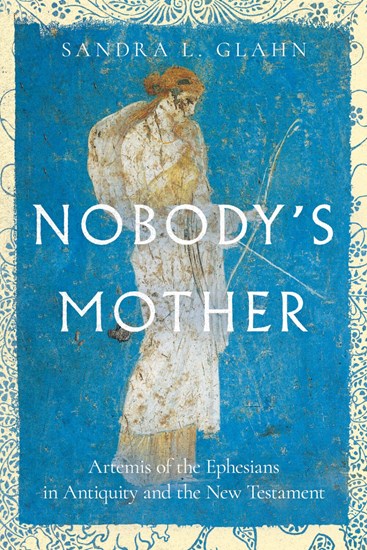
Nobody’s Mother by Sandra L. Glahn is a detailed look at questions about Artemis’s influence in Ephesians and the NT as well as specifically at 1 Timothy 2:11-15.
Glahn, after some discussion of why it’s worth taking a fresh look at Artemis in the NT, dives into Ephesus and Artemis across several chapters. For example, a common argument I’ve seen is that Artemis in Ephesus was associated with prostitution and that this should provide a background for how texts related to Artemis might play out. Glahn, however, argues that this is not the case and that the evidence for prostitution as a connection with Artemis is missing either Empire-wide or in the city of Ephesus specifically. Indeed, the opposite seems to be the case as Artermis is consistently associated with chastity and virginity. Artemis, one might say, is “Nobody’s Mother.”
Artemis was also associated with childbirth and midwifing, to the extent that she was seen as taking the pain of childbirth away. This, Glahn argues later, explains some of the complexities behind the 1 Timothy passage. One example of this is that the argument of being saved through or persevering through childbearing appears to be a reference to Artemis and has the author of 1 Timothy essentially giving readers the advice to set aside an idol–the Greek god Artemis–for Christ as Lord.
Glahn also applies some of these findings to how to read the rest of the text, noting that having Artemis in Ephesus and the related background provided in the foregoing chapters explains some of how Paul might have been arguing against false teaching and confronting the Artemis cult more directly.
Nobody’s Mother is a deep book that makes several well-informed arguments about topics related to NT interpretation. It is recommended highly.
All Links to Amazon are Affiliates links
Links
Be sure to check out the page for this site on Facebook and Twitter for discussion of posts, links to other pages of interest, random talk about theology/philosophy/apologetics/movies and more!
Book Reviews– There are plenty more book reviews to read! Read like crazy! (Scroll down for more, and click at bottom for even more!)
SDG.
——
The preceding post is the property of J.W. Wartick (apart from quotations, which are the property of their respective owners, and works of art as credited; images are often freely available to the public and J.W. Wartick makes no claims of owning rights to the images unless he makes that explicit) and should not be reproduced in part or in whole without the expressed consent of the author. All content on this site is the property of J.W. Wartick and is made available for individual and personal usage. If you cite from these documents, whether for personal or professional purposes, please give appropriate citation with both the name of the author (J.W. Wartick) and a link to the original URL. If you’d like to repost a post, you may do so, provided you show less than half of the original post on your own site and link to the original post for the rest. You must also appropriately cite the post as noted above. This blog is protected by Creative Commons licensing. By viewing any part of this site, you are agreeing to this usage policy.
Book Review: “C.S. Lewis in America” by Mark A. Noll
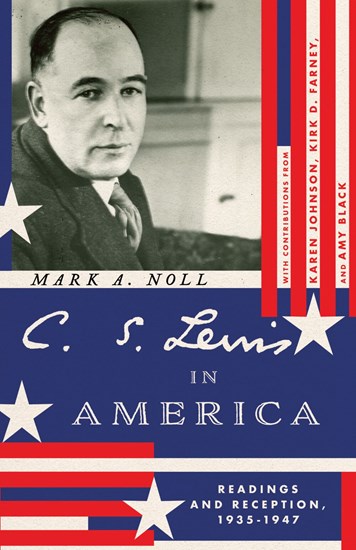
C.S. Lewis in America: Readings and Reception, 1935-1947 is a fascinating look at how C.S. Lewis was received in the United States as he published theological and other works. Mark Noll is one of the most prodigious and intriguing historians of the church in America writing today. The book is mostly focused on the question of how Lewis was received in America, but other contributors introduce a number of other topics that broadens the appeal even more.
Noll’s comments are centered around the initial, largely positive American Catholic response to Lewis, then on his reception among secular writers, and finally on Lewis’s reception among American evangelicals. Responses to these chapters focus on race and religion in America at the time of Lewis, the interplay of The Catholic Hour and The Lutheran Hour on American audiences, and the way Lewis helped foster ways of communication with Christian themes. These responses introduce a number of additional topics that are sometimes only tangentially related to C.S. Lewis, but are all well worth the time to read.
C.S. Lewis in America is a fascinating read, especially for those wanting to know more about C.S. Lewis’s reception. Noll and the other contributors introduce a number of topics that make the book quite readable and with broader appeal.
All Links to Amazon are Affiliates links
Links
Be sure to check out the page for this site on Facebook and Twitter for discussion of posts, links to other pages of interest, random talk about theology/philosophy/apologetics/movies and more!
Book Reviews– There are plenty more book reviews to read! Read like crazy! (Scroll down for more, and click at bottom for even more!)
SDG.
——
The preceding post is the property of J.W. Wartick (apart from quotations, which are the property of their respective owners, and works of art as credited; images are often freely available to the public and J.W. Wartick makes no claims of owning rights to the images unless he makes that explicit) and should not be reproduced in part or in whole without the expressed consent of the author. All content on this site is the property of J.W. Wartick and is made available for individual and personal usage. If you cite from these documents, whether for personal or professional purposes, please give appropriate citation with both the name of the author (J.W. Wartick) and a link to the original URL. If you’d like to repost a post, you may do so, provided you show less than half of the original post on your own site and link to the original post for the rest. You must also appropriately cite the post as noted above. This blog is protected by Creative Commons licensing. By viewing any part of this site, you are agreeing to this usage policy.
Book Review: “Wisdom for Faithful Reading: Principles and Practices for Old Testament Interpretation” by John Walton

Wisdom for Faithful Reading by John H. Walton seeks to introduce readers into basics of interpretation specifically related to reading the Old Testament.
The book is written not so much around chapters as topically around three parts: General Principles, Genre Guidelines, and A Way Forward. These have more than 30 principles scattered throughout that guide readers in how to think about the Old Testament as they read it.
It is important to note that part of Walton’s quest here is to redirect people from some poor readings of scripture. For example, the principle that “Prophecy is not Prediction” helps direct people away from hearing “prophecy” and automatically thinking we should find whatever is in that section on today’s headlines (163ff). Instead, prophecy is words that inform people in their context about what or how to act (see, for example, 167).
Each section has a slew of examples demonstrating Walton’s points, making the book not just useful as a guide but even as a Bible study. How can we read the text better? Try re-reading some of these passages in light of better principles for understanding and find out.
Walton’s views are, I believe, largely correct, though that doesn’t mean they’ll be uncontentious. His view of creation being largely about order rather than material creation continues to draw controversy (93ff). This, despite it being fairly well grounded in the text itself. A helpful set of FAQs at the back even address things like if one’s pastor is making a “misstep” and clarifying between a misreading of Scripture and something theologically dangerous.
Wisdom for Faithful Reading is a great introductory text to learning about how to interpret scripture. I recommend it highly for readers looking to go beyond the base level reading of the text.
All Links to Amazon are Affiliates links
Links
Be sure to check out the page for this site on Facebook and Twitter for discussion of posts, links to other pages of interest, random talk about theology/philosophy/apologetics/movies and more!
Book Reviews– There are plenty more book reviews to read! Read like crazy! (Scroll down for more, and click at bottom for even more!)
SDG.
——
The preceding post is the property of J.W. Wartick (apart from quotations, which are the property of their respective owners, and works of art as credited; images are often freely available to the public and J.W. Wartick makes no claims of owning rights to the images unless he makes that explicit) and should not be reproduced in part or in whole without the expressed consent of the author. All content on this site is the property of J.W. Wartick and is made available for individual and personal usage. If you cite from these documents, whether for personal or professional purposes, please give appropriate citation with both the name of the author (J.W. Wartick) and a link to the original URL. If you’d like to repost a post, you may do so, provided you show less than half of the original post on your own site and link to the original post for the rest. You must also appropriately cite the post as noted above. This blog is protected by Creative Commons licensing. By viewing any part of this site, you are agreeing to this usage policy.
Book Review: “Non-Toxic Masculinity: Recovering Healthy Male Sexuality” by Zachary Wagner
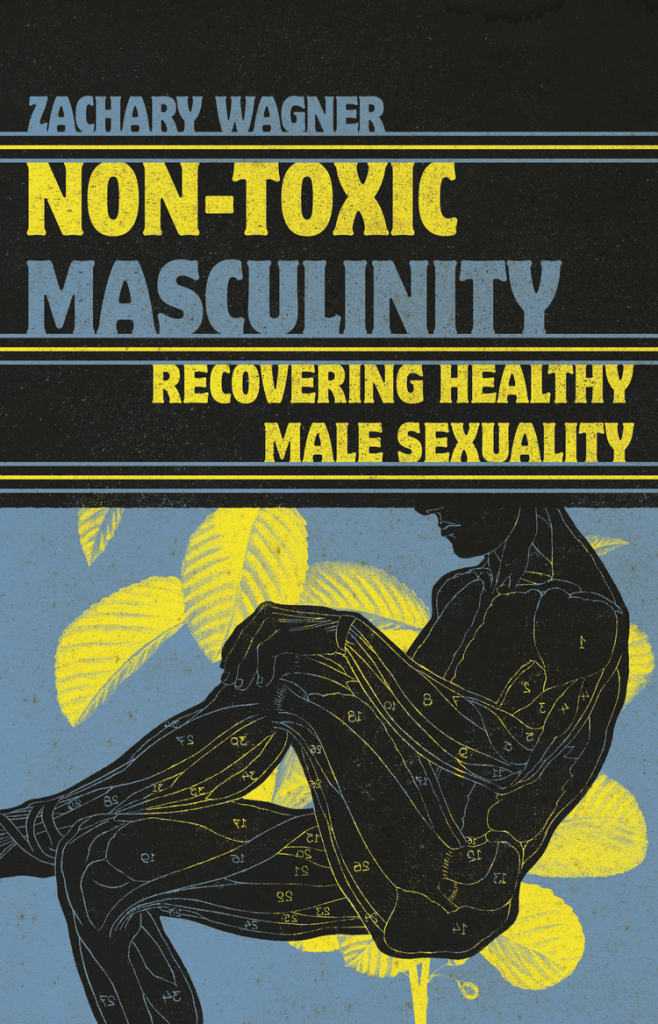
Content Warning: Discussion of Sexuality and related topics throughout this review
Toxic Masculinity is a hot-button topic. One question that often gets asked once someone acknowledges the problematic nature of a lot of masculinity-oriented ideas is “What does healthy masculinity look like?” Non-Toxic Masculinity: Recovering Healthy Male Sexuality by Zachary Wagner seeks to answer that question.
After an introduction discussing the ways in which people have been awakened to the problems of toxic masculinity (eg. through the #MeToo movement, Harvey Weinstein, and many others), Wagner dives into purity culture and how that movement helped create cultural norms that ended up causing damage not just to people harmed by men but harmed men as well. This is evident in Wagner’s discussion of the promises purity culture made to men, essentially claiming that if men behaved in certain ways it would guarantee satisfactory sexual activity, among other things (33ff). Included in this messaging was a mixed appeal to sexuality as a dangerous thing that was portrayed as nearly out of control in men while also selling it as an endgame or goal of male behavior. Indeed, this portrayal meant that both girls and boys were seen as inherently dangerous sexually, requiring girls to “cover up” while men were portrayed as potentially violent sexually at a moment’s notice.
Wagner does an excellent job of showing how toxic masculinity and purity culture are harmful to men qua males. That is, many forms of alleged masculine behavior or advice is harmful to men in ways that are quite insidious, selling essentially “prosperity sex” type mythos to men. Additionally, the way men were portrayed as inherently sexual meant that men with lower sex drives were seen as less than male or less masculine because of it. Obviously all of this ties into harmful views of women, such as the hypersexualization of women and objectification thereof.
Next, Wagner turns to a reforming of masculine portrayal, offering helpful ways to see masculinity that avoid the problematic nature of toxic masculinity.
There were a few issues I had with the book, however. First is that any discussion of reforming masculinity almost inevitably lends itself to a dichotomy of human nature that fails to see humanity as bell curve. Men and women aren’t opposite extremes–and to be clear, I’m not saying at all Wagner portrays them as such. Books that speak exclusively to femininity or masculinity almost require a dichotomy that doesn’t account for the wide range of human gender expression, even within traditional conceptions of male/female expression. I found this book to be no exception, and wondered what people from LGBTQ+ perspectives might think of it. Wagner does point out that many traditional comments about gay sexuality are off base and often show difficulties with traditional sexual ethical expectations as well (see, for example, the discussion of marriage on 40-41).
Another sort of strange note was the discussion of masturbation, in which Wagner suggests that it might necessarily include dehumanizaiton of others, interestingly because he argues that it includes lust and non-consensual sexual performance in a sense (127). After giving these nods to an anti-masturbation stance, Wagner says he “want[s] to allow for some nuance and disagreement around masturbation…” This nuance includes the fact that many who denounce it are doing so from cisgender heterosexual married people and thus from the easiest ground to do so. Additionally, he notes that we shouldn’t burden people with additional rules that aren’t easy to find or define biblically. I honestly thought this whole aside was strange, but thought-provoking. The concept of tying masturbation to nonconsensual sexual behavior was particularly provoking, but also made me wonder more along the lines of whether thoughts are inherently sinful/etc. And there seem to be things that would counter some of the arguments Wagner offered. What if, for example, a partner gives permission to the other to think of them sexually in such a way? That would seem to remove the problems regarding consent. Overall I admit some skepticism of the whole arguments in this section.
A final, tiny note is that there is no index in the book, and I think basically any book of this kind would benefit from indices.
Non-Toxic Masculinity has many helpful parts, though I wasn’t entirely sold on everything. It would serve as a good conversation starter that might help direct future discussion of the topic for many readers. The discussion of how men are harmed by masculinity-movements was especially helpful.
All Links to Amazon are Affiliates links
Links
Be sure to check out the page for this site on Facebook and Twitter for discussion of posts, links to other pages of interest, random talk about theology/philosophy/apologetics/movies and more!
Book Reviews– There are plenty more book reviews to read! Read like crazy! (Scroll down for more, and click at bottom for even more!)
SDG.
——
The preceding post is the property of J.W. Wartick (apart from quotations, which are the property of their respective owners, and works of art as credited; images are often freely available to the public and J.W. Wartick makes no claims of owning rights to the images unless he makes that explicit) and should not be reproduced in part or in whole without the expressed consent of the author. All content on this site is the property of J.W. Wartick and is made available for individual and personal usage. If you cite from these documents, whether for personal or professional purposes, please give appropriate citation with both the name of the author (J.W. Wartick) and a link to the original URL. If you’d like to repost a post, you may do so, provided you show less than half of the original post on your own site and link to the original post for the rest. You must also appropriately cite the post as noted above. This blog is protected by Creative Commons licensing. By viewing any part of this site, you are agreeing to this usage policy.
